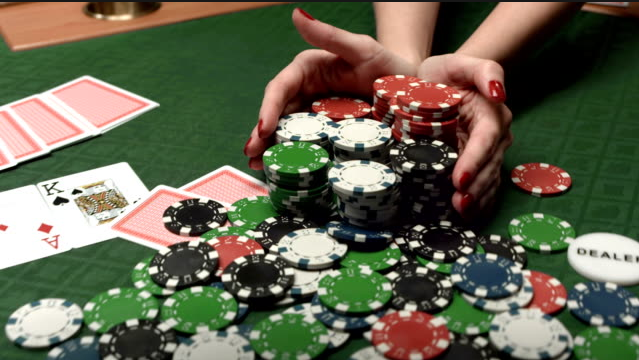In the realm of poker, “equity distributions” denotes the division of the pot among players based on their equity in the current hand. This concept stands as a pivotal element of poker, and gaining a comprehension of it can enhance your decision-making prowess at the table.
Developing the ability to apply and interpret various equity distributions is a priceless skill to integrate into your online poker strategy.
Continue reading for a detailed exploration of equity distributions, emphasizing the significance of understanding your hand’s equity relative to your opponent’s range, and how equity distribution shapes your poker tactics in diverse scenarios.
Impact of Equity Distribution on Decision-Making:
Equity represents the share of the pot that each player merits, determined by their likelihood of winning the hand. It serves as a fundamental principle in poker.
Consider a hypothetical poker tournament featuring two players and a total pot of $100. If Player A possesses a 70% equity, they are entitled to claim 70% of the pot, totaling $70. Essentially, equity can be likened to “your portion of the winnings.”
Equity distribution significantly influences decision-making by enabling players to evaluate the potential value of their hands. Armed with this understanding, players can make informed decisions regarding whether to bet, raise, call, or fold.
Understanding Your Hand’s Equity Against Your Opponent’s Range.

Equity refers to the portion of the pot corresponding to your current probability of winning the hand. Consider the following scenario: if you go all-in with an AK of clubs and face a call from red queens, you can expect to win approximately 46% of the time. In a simplified example, if both you and your opponent contribute $100 to the pot, on average, you would receive $92 (representing 46% of $200, disregarding the rake for simplicity). The mathematical definition of equity is expressed as follows: Equity% = (win% + 0.5 tie%).
On a poker equity chart, a hand that wins 50%, ties 20%, and loses 30% would have 60% equity (or -150 in moneyline odds). There are three common ways to articulate equity.
1.Hand vs. Hand Equity:
The AK example illustrates the equity a specific hand possesses against any other hand. Experienced players can quickly discern how most starting hands fare against each other, while newer players can, with time and practice, become proficient at memorizing equity values associated with specific holdings.
2.Hand vs. Range Equity:
Estimating this type of equity involves deeper knowledge and experience. An instance of hand versus range equity could be 84.83% (odds of -559) for AA against a wide button open range (representing 50% of all poker hands).
3.Range vs. Range Equity:
This is the most challenging type of equity to gauge, given that both ranges may consist of numerous hands. Memorizing equities for all possible ranges versus other ranges is nearly impossible for humans, but with practice, one can enhance skills and achieve high accuracy in commonly used estimations.
It’s crucial to note that these equity calculations apply to both preflop and various postflop scenarios (flop, turn, or river). Estimating equity becomes more complex with postflop boards, adding an extra layer of difficulty. Understanding equity is instrumental in shaping your strategy across different poker situations.

In poker, the synchronization of your equity distribution with that of your opponent plays a crucial role in determining both the frequency and magnitude of your bets. This principle is particularly applicable in two distinct scenarios.
1.When There’s a Substantial, Consistent Disparity Between the Two Ranges:
In this case, the player with the more robust range should adopt a more frequent betting strategy. Specifically, during the flop, the greater the gap in equity distributions between the two ranges, the more aggressively the in-position player can approach the game. The opponent, lacking the necessary hands in their range, is ill-equipped to counter the heightened aggression.
2.When There’s a Discrepancy in the Top 20% of the Ranges:
Here, the player possessing a greater number of formidable hands should deploy larger bets, commonly referred to as having “the nut advantage.” The fundamental takeaway is that the extent of your advantage in the upper echelons of the ranges should directly impact the magnitude of your bets. This principle holds true across all stages of the game tree, including the flop, turn, and river.


